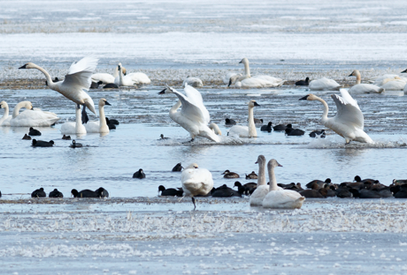March is a month of transition from winter to areas of open water therefore signaling the return of water fowl.
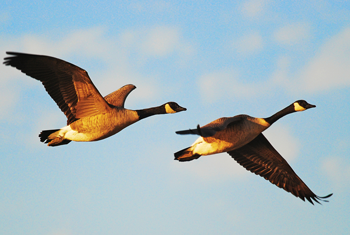
The first week of March often brings the return of the Canada Geese. Pairs claim nesting territory honking noisily. A pair of geese can be seen standing on the ice of the marshes and wetlands as if willing the ice to melt. The female chooses the site and builds the nest while the male stands guard. Egg laying is triggered by open water.
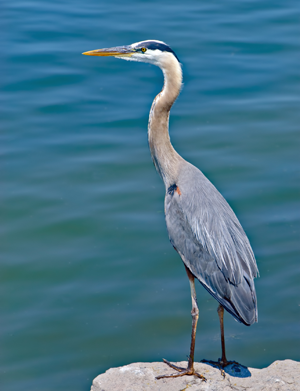
Great Blue Herons have returned to the metro as early as the first week of March as well. They seek out the open water on the edges of ponds, rivers and marshes. Great Blue Herons feed on small fish, amphibians, small mammals, aquatic invertebrates and reptiles. They nest in colonies- tree top communal nests called rookeries. Once hatched the adults feed the young for eight weeks before they fledge the nest.
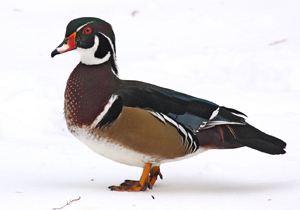
Some Wood Ducks arrive in the second week of March but others are still arriving through the third week of April. Birds of the forest, Wood ducks will nest in a tree a mile or more from water. They are attracted to nest boxes erected close to the shoreline of lakes, streams and wetlands.

Returning in late March the Common Loon prefers large rivers and lakes, often with islands. These islands provide undisturbed shorelines for nesting. Loons require a length of open water for flight as they run across the surface of the water before take-off.
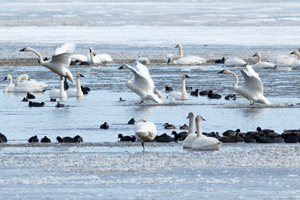
Tundra Swans fly in large V shapes high overhead. In later March they may be seen resting on open water before continuing on their way. Minnesota’s population of Trumpeter Swans, on the other hand, are short distance migrants. They only go as far south as central and southern Minnesota to sites where there is open water and an abundant food supply such as near power plants and remain there all winter.
By Minnetonka Manager CAROL CHENAULT


